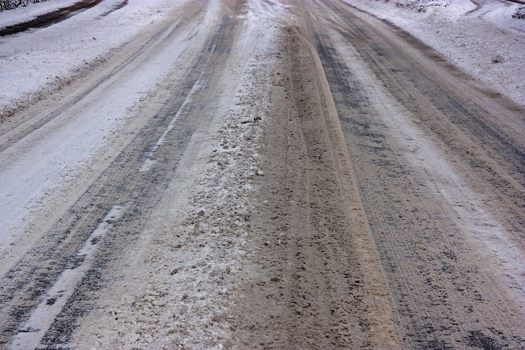Unless you drive a vehicle made from a precious metal, without regular rust proofing it is likely to experience some corrosion during the course of it's life. The greatest advice, as always is rust prevention rather than having to remove once it has started. Rejel supplies a wide range of DINITROL rust prevention products for cars of all shapes and sizes as well as agricultural and commercial vehicles.
Even though cars have rust protection applied during production they become more vulnerable over time. Stones chips, scratches and nicks from daily driving expose bare metal. When this happens on less visible surfaces such as the underbody, the onset of rust can go unnoticed. The wheel wells are also particularly vulnerable.
The DINITROL rust prevention range of products includes vehicle underseal, cavity waxes, engine compartment coatings and windscreen fitting primers.
Knowing which DINITROL rust prevention product to apply is dependent on the particular circumstances and desired application. The product range contains many specialist rust protection coatings that designed for different situations.
Many car owners in north European countries and Scandinavia are diligent about re-applying rust prevention coatings on an annual to bi-annual basis. The harsh winter weather conditions experienced in these countries means vehicles are more vulnerable to corrosion. In the UK we may not experience the same prolonged periods of snow and ice but it is still worth considering having an annual inspection of the chassis. Doing this will offer a good indication of whether an underbody rust proofing is needed or not. A stone-chip rustproofing, for instance will provide protection to the chassis from chips to the paint layer which can leave it vulnerable to the onset of rust once exposed to road salt, water or moisture. Road salt accelerates the oxidisation process when water and oxygen react with metal - the chemical reaction is rust (iron oxide). This corrosion can lead to premature parts failure of the exhaust system, subframe, brake system and coil springs - leading to costly replacements.

Steps to applying rust prevention to your own vehicle
Either take your car to the nearest treatment centre or you can apply underbody rust proofing yourself provided you are able to raise your vehicle safely to get under it to inspect the underbody chassis, treat any rust spots and apply the underbody coating. Rejel supply DINITROL rustproofing kits in aerosol or 1 Litre cans that can be applied with a shultz gun attached to a suitable air compressor.
Rust proofing
- Steam clean the underbody chassis area with a pressure washer and leave to dry. Depending on weather conditions or surrounding air temperature, your vehicles undercarriage can take up to 5 days to dry fully. Mask areas you don't want to treat to avoid overspray. Suitable personal protection equipment is also advised.
- Treat any signs of rust with RC900 rust convertor. First remove any flaking rust and then apply to the remaining rust making sure the edges are coated. The complex organic chelat base and epoxy resin will convert rust into a stable organic iron complex.
- Apply DINITROL penetrating cavity wax to protect all cavities, crevices and box sections located around your vehicle - a spray diagram can be purchased to show where to spray cavity wax. Also apply a thin coat of the cavity wax to the underside of the vehicle. Spraying a thin coat of cavity wax prior to applying the underbody coating softens up any existing coating that may be present and helps with the adhesion of the underbody or stonechip coating. Cavity waxes also contain rust inhibitors whilst the underbody coating combats the highly corrosive effects of road salt and abrasion.
- Apply DINITROL underbody rust prevention. All DIY kits include the most popular DINITROL 4941 underbody rustproofing product. It provides a black hard waxy protective chassis underbody coating with good abrasion resistance. The product also contains self healing characteristics whilst adhering to painted surfaces or those coated with PVC or a similar material layer. DINITROL underbody chassis coatings will protect your vehicle from stone-chips, water ingress and the highly corrosive impact of road salt. To obtain the optimum protection a typical thickness of 700 microns wet should be applied. This will dry to around 500 microns.
DINITROL OEM approved rust proofing underbody products offer a protective coating by forming a tough ‘rubbery’ resistant layer against stone-chips, gravel, road debris, road surface rain water and water ingress during harsh weather conditions. With the increased risk of flooding in the UK from freak weather storms and severe winters, many vehicle owners are now looking to protect their cars by applying an underbody rust prevention coating.
Nowadays all new vehicles have underbody chassis rust proofing applied during production or at import plants. But, as they age, checks should be carried out to ensure that the coating is still providing adequate rust protection and not damaged in places allowing rain water to penetrate through.
